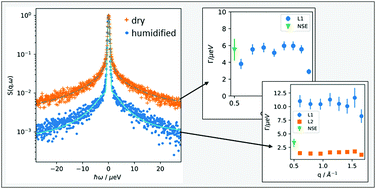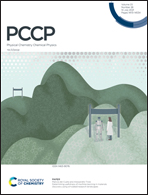Mobility of bound water in PNIPAM microgels†
Abstract
Polymer–solvent interactions play a crucial role in the stimuli-responsive behaviour of polymer networks. They influence the swelling/deswelling behaviour as well as the dynamics of the polymer chains. Scattering experiments provide insight into the polymer–water interaction of poly(N-isopropylacrylamide) (PNIPAM) microgels cross-linked with N,N′-methylenebisacrylamide (BIS) in dried and humidified state. The water mobility is studied by means of neutron spin-echo spectroscopy and neutron backscattering spectroscopy. The residual water amount has been determined with Karl Fischer titration. For both degrees of humidification, the relaxation time of the water molecules is much larger than that of free water due to the strong interactions with the polymer network and is only weakly depending on temperature and length scale of observation. The possible influence of the water on methyl group rotations is discussed.



 Please wait while we load your content...
Please wait while we load your content...